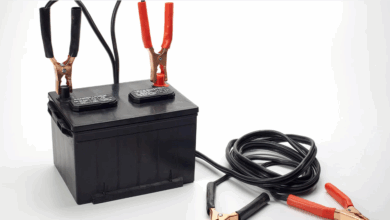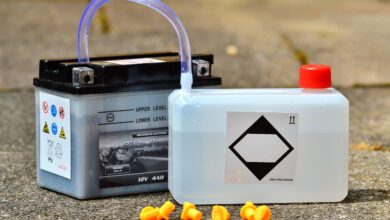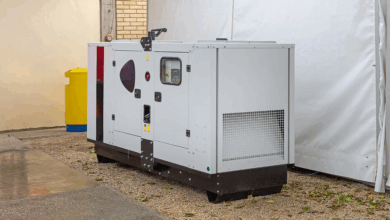Top Generators for Your Home

Powering Through Outages: A Guide to Top Generators for Your Home
Few things disrupt modern life quite like a power outage. Whether caused by severe weather, grid issues, or unforeseen emergencies, losing power can mean plunging into darkness, losing refrigerated food, being unable to work from home, or worse, jeopardizing the function of essential medical equipment. For many homeowners, a reliable generator isn’t just a luxury – it’s a necessity for comfort, safety, and peace of mind.
But with numerous types, sizes, and brands on the market, choosing the "top" generator for your home can feel overwhelming. The "best" generator isn’t necessarily the biggest or most expensive; it’s the one that best fits your specific needs, budget, and circumstances. This guide will walk you through the essential considerations and highlight what makes certain generators rise to the top in different categories.
Why a Generator is a Smart Investment
Beyond simply keeping the lights on, a home generator provides several critical benefits during an outage:
- Preserves Essentials: Keeps refrigerators and freezers running, preventing food spoilage.
- Maintains Comfort: Powers heating and cooling systems, keeping your home habitable.
- Ensures Safety: Keeps security systems active and provides light to avoid accidents.
- Supports Modern Life: Allows you to charge devices, work remotely, and stay connected.
- Protects Your Home: Powers sump pumps to prevent flooding in basements.
- Provides Peace of Mind: Knowing you’re prepared significantly reduces stress during emergencies.
Understanding the Two Main Types: Standby vs. Portable
The first major decision you’ll face is choosing between a standby generator and a portable generator. Each serves a different purpose and comes with its own set of pros and cons.
-
Standby Generators:
- What they are: Permanently installed outside your home, similar to an AC unit. Connected directly to your electrical panel via an automatic transfer switch.
- How they work: When the power goes out, the automatic transfer switch detects the outage and signals the generator to start. It automatically switches your home’s power source from the utility grid to the generator, often within seconds. When utility power is restored, the system automatically switches back, and the generator shuts off.
- Pros:
- Fully automatic operation – no need to be home to start it.
- Can power essential circuits or even your entire house.
- Runs on natural gas or propane, eliminating the need for refueling during an outage.
- Quieter than most portable generators, often housed in sound-attenuating enclosures.
- Increased home value.
- Cons:
- Portable Generators:
- What they are: Mobile units with engines and fuel tanks, typically gasoline-powered (though propane, natural gas, and dual-fuel options exist).
- How they work: Must be manually started (pull cord or electric start) and plugged into appliances directly via extension cords or connected to the home’s electrical panel via a manual transfer switch (highly recommended for safety).
- Pros:
- More affordable than standby generators.
- Versatile – can be used for camping, tailgating, job sites, etc.
- No permanent installation required.
- Range of sizes available for different needs.
- Cons:
- Requires manual operation and refueling.
- Cannot be run indoors or in garages due to carbon monoxide risk (must be operated far from windows and doors).
- Significantly louder than standby units.
- Less power capacity than many standby units.
- Managing extension cords can be cumbersome; a manual transfer switch requires professional installation.
Factors to Consider When Choosing Your Generator
Once you understand the basic types, evaluate these factors to narrow down your options:
-
Power Needs (Wattage): This is the most critical factor.
- Identify essential appliances: List everything you must run during an outage (fridge, freezer, furnace fan, well pump, lights, phone chargers, maybe one window AC unit).
- Calculate running watts: Find the continuous wattage requirement for each appliance (usually on a label).
- Calculate starting watts: Note that appliances with electric motors (refrigerators, pumps, AC units) require a surge of power to start, often 2-3 times their running wattage. You only need enough starting wattage for the largest motor you anticipate starting while other items are already running.
- Total it up: Add the running watts of all items you want to run simultaneously, plus the single largest starting wattage. This gives you a good estimate of the minimum wattage you need. Err on the side of caution and get slightly more power than your calculated minimum. Portable generators range from ~1,500W to 10,000W+, while standby generators range from 7,000W to 22,000W or much higher.
-
Fuel Type:
- Gasoline: Most common for portables, readily available but stores poorly and produces more emissions.
- Propane: Stores well indefinitely, cleaner burning than gasoline, good for both portables and standbys. Requires propane tanks or connection to a large tank.
- Natural Gas: Ideal for standby units if you have a natural gas line. Unlimited fuel supply, cleaner burning. Not suitable for portable units due to pressure requirements.
- Diesel: More fuel-efficient, longer shelf life than gasoline, common for larger commercial generators. Less common and often louder for residential use.
- Dual-Fuel: Portable generators that can run on either gasoline or propane, offering flexibility.
-
Noise Level: Generators are loud, measured in decibels (dB).
- Portable: Typically range from 65 dB to 85 dB or more (comparable to a vacuum cleaner or busy traffic). Inverter generators are significantly quieter (50-60 dB – conversation level).
- Standby: Generally quieter than conventional portables, often 55 dB to 65 dB (similar to an air conditioner unit). Noise regulations may apply in residential areas.
-
Transfer Switch: Essential for safely connecting a generator to your home’s electrical system.
- Manual Transfer Switch: For portables. Requires manually flipping switches to isolate your home from the grid before connecting the generator. Prevents dangerous "backfeeding." Highly recommended over extension cords for powering multiple circuits.
- Automatic Transfer Switch (ATS): Standard with standby generators. Detects outages and switches power source automatically.
-
Maintenance: Generators require regular maintenance (oil changes, filter replacements, battery checks). Consider ease of maintenance and availability of service technicians.
- Budget: Portable generators range from a few hundred dollars to several thousand. Standby generators typically start at $3,000 – $6,000 for the unit alone, plus significant installation costs ($3,000 – $8,000+ depending on complexity).
Highlighting "Top" Generators by Category
While specific models vary, we can identify "top" options based on type, features, and reputation:
- Top for Whole-House Automatic Power (Standby): Brands like Generac, Kohler, and Cummins are industry leaders. They offer reliable, powerful units with sophisticated automatic transfer switches, quiet operation, and robust dealer/service networks. These are "top" for homeowners who want the ultimate convenience and preparedness without any manual effort. They come in various sizes to power everything from essential circuits to entire large homes.
- Top for Quiet, Sensitive Electronics (Inverter Portable): Honda, Yamaha, and certain models from Westinghouse or Champion are highly regarded. Inverter technology produces clean, stable power safe for sensitive electronics like laptops and phones. They are significantly quieter and more fuel-efficient at lower loads. These are "top" for camping, tailgating, or backing up just essential electronics and a few small appliances during an outage. Look for features like parallel capability to link two units for more power.
- Top for Versatile, Cost-Effective Backup (Conventional Portable): Brands like Champion, Westinghouse, Firman, and Generac offer powerful conventional portable generators at more accessible price points. These are "top" for homeowners who need more raw power to run things like a well pump, furnace, refrigerator, and some lights, and are willing to manage fuel and manual operation. Look for features like electric start, multiple outlets, and robust frames.
- Top for Fuel Flexibility (Dual-Fuel Portable): Many brands now offer dual-fuel models (e.g., Champion, Westinghouse). These are "top" for users who want the option of using readily available gasoline or longer-storing propane, offering flexibility during an extended outage or for varied uses.
Installation and Safety: Non-Negotiable
- Standby generators must be installed by qualified professionals (electricians and plumbers/gas fitters) to ensure compliance with codes, safe electrical connection via an ATS, and proper fuel line installation.
- Portable generators must never be run indoors or in an attached garage. They produce deadly carbon monoxide. Operate them at least 20 feet away from your home, directed away from windows and doors.
- Use a transfer switch with portable generators if connecting to your home’s panel. Backfeeding power into the grid is extremely dangerous for utility workers.
- Ensure proper grounding for portable generators.
- Store fuel safely and follow manufacturer guidelines for maintenance.
Conclusion
Investing in a home generator is an investment in security, comfort, and peace of mind. While the array of options might seem daunting, breaking down the decision by understanding the core types (standby vs. portable), assessing your power needs (wattage), and considering factors like fuel, noise, and budget makes the process manageable.
Whether you opt for the seamless, whole-house backup of a standby generator from a top brand like Generac or Kohler, or the versatile, portable power of a highly-rated inverter from Honda or a robust conventional unit from Champion, choosing a reliable generator means you’re prepared to weather the storm and keep your home running when the rest of the neighborhood goes dark. Prioritize safety, choose a unit that meets your calculated power requirements, and consult with professionals for installation where necessary. With the right generator, you can truly power up your peace of mind.
FAQs Section
Q1: How do I figure out what size generator I need?
A1: List the appliances you need to power, find their running wattage, and calculate the surge (starting) wattage for the largest motor among them. Add the running wattages of everything you want to run simultaneously plus the single largest surge wattage. This gives you an estimate of the required wattage. It’s wise to add a buffer.
Q2: Is a standby generator worth the high cost?
A2: For homeowners who frequently experience power outages, need to power essential medical equipment, want backup power even when away from home, or wish to power most/all of their house automatically, the cost of a standby generator is often justified by the convenience, reliability, and peace of mind it provides.
Q3: Can I run a portable generator in my garage if the door is open?
A3: ABSOLUTELY NOT. Portable generators produce lethal levels of carbon monoxide. They must be operated outdoors, far away (at least 20 feet) from windows, doors, and vents to prevent fumes from entering your home.
Q4: What is a transfer switch and why do I need one?
A4: A transfer switch is a device that safely connects a generator to your home’s electrical panel. It isolates your home from the utility grid before the generator powers circuits. This prevents "backfeeding," which is sending power from your generator back into the utility lines, posing a fatal risk to utility workers. A transfer switch is essential for safety if you plan to connect your generator directly to your home’s wiring rather than just using extension cords.
Q5: What’s the difference between a conventional portable generator and an inverter generator?
A5: Conventional generators produce raw AC power directly from the engine’s RPMs, which can fluctuate and isn’t ideal for sensitive electronics. Inverter generators use advanced electronics to convert raw AC power to DC and then back to clean AC power. This results in a more stable power output (safe for electronics), quieter operation, and better fuel efficiency at varying loads compared to conventional models of similar output.
Q6: How long can a generator run?
A6: Run time depends on the size of the fuel tank (for portables), the fuel type (natural gas is continuous for standbys), and the load being placed on the generator. Portable generators typically run for 8-12 hours on a tank of gasoline at half load. Standby generators running on natural gas can run indefinitely as long as the gas supply is available; propane run time depends on the size of the tank.
Q7: Do generators require a lot of maintenance?
A7: Like any engine, generators require regular maintenance. This typically includes checking and changing the oil and filters, inspecting spark plugs, and testing the unit regularly (especially standby units, which often have auto-test functions). Following the manufacturer’s maintenance schedule is crucial for reliability and longevity.




![How to Bypass CO Sensor on Generator – [4-Step Safety Guide]](https://www.generator411.com/wp-content/uploads/2025/08/co-sensor-on-generator-390x220.png)